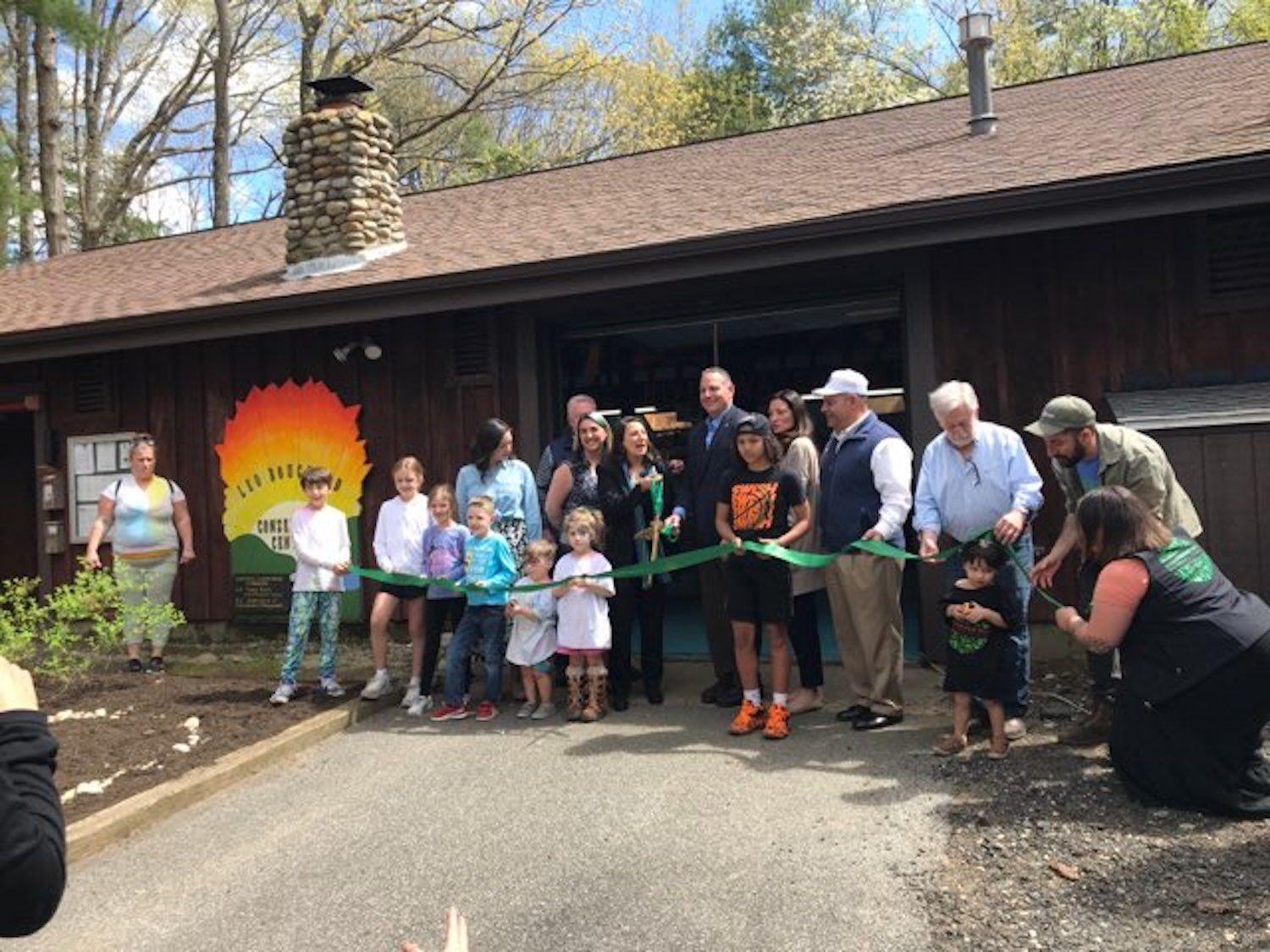
Officials from Smithfield and the Woonasquatucket River Watershed Council attended the ribbon cutting of the newly renovated Leo Bouchard Conservation Center, which will serve as an education center for area students.
SMITHFIELD – On a sunny afternoon last Saturday, the sun glinted off the Stillwater Reservoir as the Woonasquatucket River Watershed Council and town officials unveiled the renovated Leo Bouchard Conservation Center.
The WRWC worked with Smithfield, the Conservation Commission, and the Land Trust to present the new facility at 5 Waterview Drive as an educational center providing student programming throughout the Woonasquatucket River Watershed.
Town Manager Randy Rossi said he was excited to share in the unveiling of an “incredible resource” for the community.
“This education center will support a robust environmental curriculum already implemented in all Smithfield elementary schools. It’s imperative that families learn about the importance of our watershed and its impacts on the entire state,” he said.
Located on the Stillwater Reservoir, the Woonasquatucket River drains into lakes and reservoirs in Smithfield and surrounding towns. Along with serving as an integral location for the WRWC’s environmental education programs in the northern portion of the watershed, the area is also suitable for hiking, canoe and kayak trips, bird watching, and more, said Hilly Lima, media representative for WRWC.
The project is the latest of the WRWC investments bringing conservation, education, recreation, and climate resiliency to Smithfield.
Alicia Lehrer, WRWC executive director, said it is her hope that the success of the WRWC serves as a model for future partnerships.
“This innovative center will bring environmental education and experiential learning to Northern Rhode Island and beyond. This collaborative public/private project will foster an appreciation of the amazing natural resources we all share and develop future environmental leaders,” Lehrer stated.
Amanda Peavey, WRWC education director, said that through educational programming in both schools and the new center, students can develop an appreciation for and understanding of nature, and develop into future environmental stewards.
“They learn about local environmental issues and understand that what they do can affect the natural resources that surround them and the communities living downstream,” Peavey said.
Funding for the renovations came through the town of Smithfield, the help of local volunteers, and $125,000 in grant funding from the Annenberg Foundation and James M. Cox Foundation to the WRWC.
